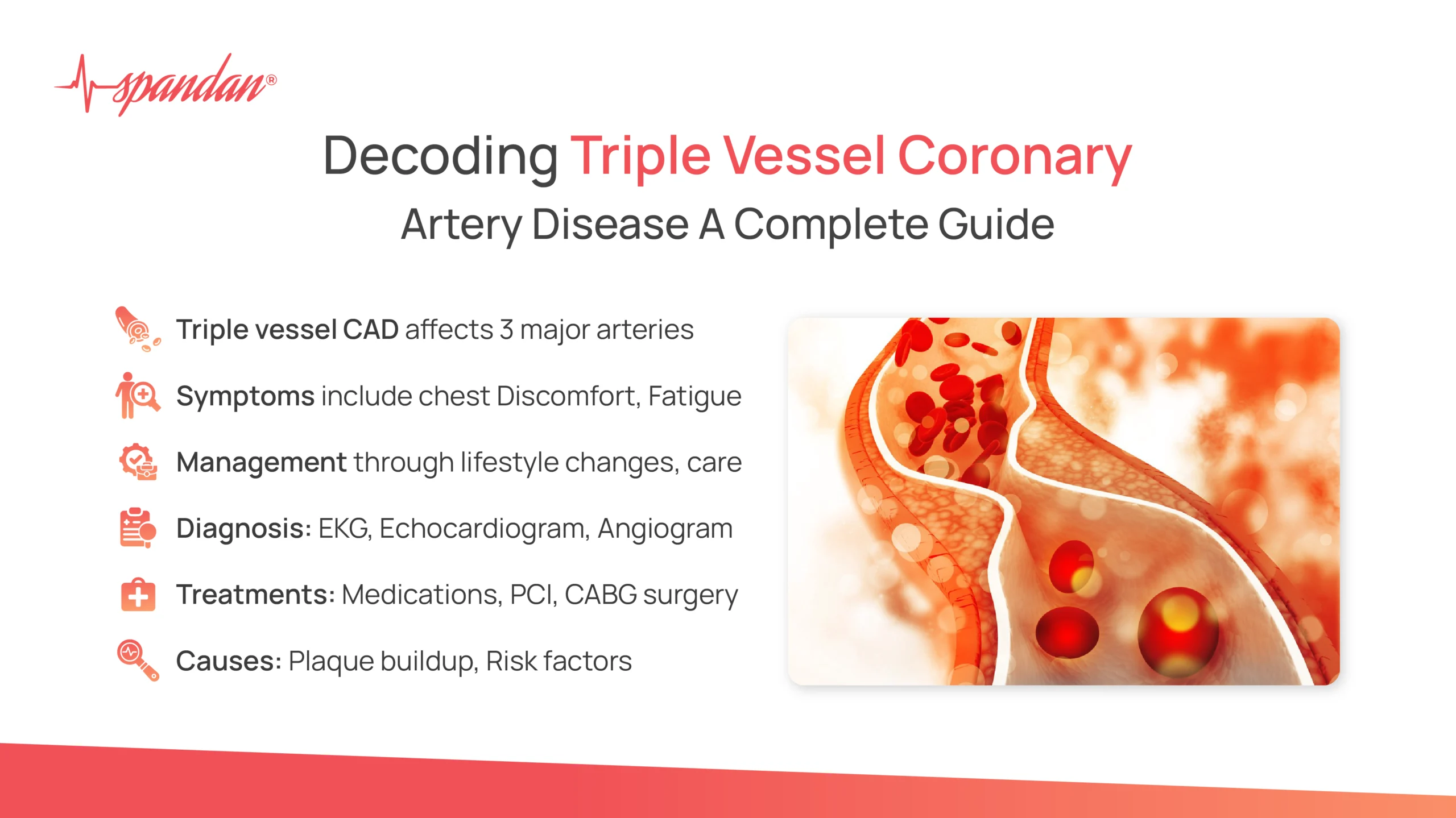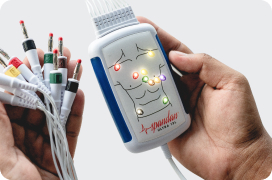
Related Article
Author:- Mr. Ritesh Sharma
Coronary artery disease (CAD) is a prevalent heart condition that affects millions worldwide. While CAD typically involves one artery, a more severe form known as triple vessel coronary artery disease impacts three major coronary arteries simultaneously. This blog post aims to provide a comprehensive overview of triple vessel coronary artery disease, including its symptoms, causes, diagnosis, treatment options, and outlook for those affected.
What is Triple Vessel Coronary Artery Disease?
Triple vessel coronary artery disease is an advanced stage of CAD where three primary coronary arteries are affected:
- Left circumflex artery
- Right coronary artery
- Left anterior descending artery
These arteries are responsible for supplying blood to the heart muscle. In triple vessel CAD, damage occurs to all three, usually due to the accumulation of fatty deposits called plaques on the artery walls or inflammation. This condition represents a progression of CAD and typically develops when the disease is not well-managed over time.
Recognizing the Symptoms
The symptoms of triple vessel CAD are similar to those of regular CAD and may include:
- Fatigue and confusion
- Shortness of breath
- Chest pain or discomfort
- Irregular heartbeat
- Heartburn or choking sensation
- Nausea and vomiting
- Dizziness
- Pain in the back, neck, arms, shoulders, or jaw
It’s crucial to note that these symptoms can also indicate other heart-related conditions. If you experience any of these signs, it’s advisable to consult a healthcare professional promptly.
Causes and Risk Factors
The primary cause of triple vessel CAD is atherosclerosis, which involves the buildup of plaque on artery walls. This process is influenced by various factors, including:
- High cholesterol and triglyceride levels
- High blood pressure (hypertension)
- Smoking
- Family history of heart disease
- Obesity
- Lack of physical activity
- Diabetes
- Insulin resistance
Individuals with existing CAD who also have hypertension face an increased risk of progression to triple vessel CAD.
Diagnosis Methods
To diagnose triple vessel CAD, doctors employ a combination of patient history assessment and specialized tests. The diagnostic process may include:
- Electrocardiogram (EKG): Records the heart’s electrical signals. An abnormal ECG showcases the Triple Vessel Coronary Artery Disease.
- Echocardiogram: Uses ultrasound to capture images of the heart’s structure and function.
- Stress test: Evaluates the heart’s response to physical activity.
- Angiogram: Involves injecting a special dye into the arteries to visualize blood flow and identify blockages.
These tests help physicians assess the extent of artery damage and determine the most appropriate treatment plan.
Treatment Approaches
The primary goals of treating triple vessel CAD are to improve blood flow, reduce strain on the heart, and slow down or reverse plaque buildup. Treatment options may include:
Medications:
- Beta-blockers or calcium channel blockers to lower blood pressure
- Vasodilators to relax artery walls
Surgical procedures:
- Percutaneous coronary intervention (PCI): Uses balloons and stents to open blocked arteries
- Coronary artery bypass grafting (CABG): Creates new pathways for blood flow around blocked arteries
Lifestyle modifications:
- Increasing physical activity
- Adopting a heart-healthy diet
- Quitting smoking
- Achieving and maintaining a healthy weight
The specific treatment plan depends on factors such as overall health, current medications, and individual response to treatment.
Can Triple Vessel CAD be Reversed?
While a complete reversal of triple vessel CAD may not be possible based on current evidence, significant improvements can be achieved through proper treatment and lifestyle changes. By following a doctor-prescribed treatment plan and adopting heart-healthy habits, patients can potentially slow down or halt the progression of the disease and reduce the risk of complications such as heart attacks and strokes.
Outlook for Patients
Triple vessel CAD is a serious condition that affects multiple arteries and increases the risk of cardiovascular complications. However, with appropriate medical interventions and lifestyle adjustments, many patients can effectively manage the condition and improve their quality of life.
The long-term outlook for individuals with triple vessel CAD varies depending on factors such as family history, co-existing health conditions, and adherence to treatment plans. In general, a combination of medical treatments and lifestyle changes can lead to positive outcomes for many patients.
Triple vessel coronary artery disease represents a significant progression of coronary artery disease, affecting three major coronary arteries. While it poses serious health risks, including an increased likelihood of heart attacks and strokes, there are various treatment options available to manage the condition effectively.
Early diagnosis and intervention are crucial in managing the triple vessel coronary artery disease. If you experience symptoms such as chest pain, shortness of breath, or unusual fatigue, it’s essential to seek medical attention promptly. Your healthcare provider can assess your condition and recommend appropriate diagnostic tests and treatment options.
Remember that while triple vessel coronary artery disease is a serious condition, many patients can successfully manage it through a combination of medical treatments, surgical interventions when necessary, and lifestyle modifications. By working closely with your healthcare team and committing to heart-healthy habits, you can take significant steps towards improving your cardiovascular health and overall well-being.
Ultimately, living with triple vessel coronary artery disease requires ongoing care and attention to your heart health. Stay informed about your condition, follow your treatment plan diligently, and maintain open communication with your healthcare providers. With proper management and a proactive approach to your health, you can work towards minimizing the impact of triple vessel CAD on your life and reducing the risk of further complications.




